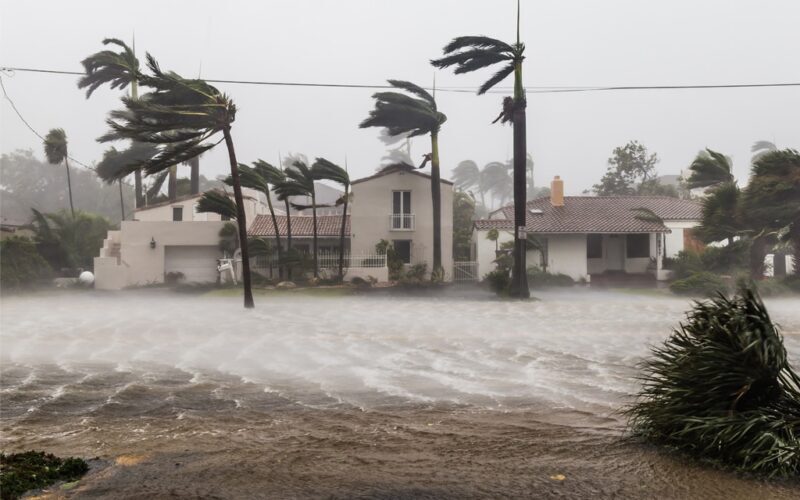Hurricane Preparedness – Protecting Your Family
Ensuring that your family has the information they need to stay safe.
Every year over the summer and into late fall, we hear about the devastation of hurricanes and tropical storms. In some cases, the damage is minimal. But way too often, the damage proves lifechanging. This highlights the need to prepare for a hurricane or tropical storm.
It is important to understand that hurricanes not only affect people living along the coast. As evidenced by recent storms, it can cause damage to property hundreds of miles inland. So hurricane awareness is just as important for these people too.

In this article, we look to help you prepare for a hurricane or tropical storm. It has been proven that taking the right steps before a storm, we can help minimize the impact after.
Please note that this content is reader supported. By clicking our links, we may earn a commission. Thank you!
When is Hurricane Season?
Before we discuss how to prepare for a hurricane, it’s important to lay the foundation. In this case, let’s make sure we understand when hurricane season is. Hurricane season starts on May 15th in the north Pacific and June 1st in the Atlantic and Caribbean. It ends on November 30th.
The National Oceanic and Atmospheric Administration, NOAA, works to predict how things will go for the hurricane season. For instance, in 2022, they predicted an above-normal Atlantic hurricane season. As part of their research they predicted 14-21 named storms, 6-10 hurricanes and 3-6 major hurricanes. While these are only predictions, it is not a bad idea to look at reports like this early on to be informed about weather patterns and how you might be affected.
What’s the Difference Between a Hurricane Watch and Warning?
Before a hurricane, you’ll hear two different alerts: Hurricane Watch and Hurricane Warning. According to the CDC, here are what these two alerts mean:
- A hurricane watch means hurricane conditions (sustained winds of 74 miles per hour [mph] or higher) are possible in a stated area. Experts announce hurricane watches 48 hours before they expect tropical-storm-force winds (sustained winds of 39 to 73 mph) to start.
- A hurricane warning is more serious. It means hurricane-force winds are expected in a stated area. Experts issue these warnings 36 hours before tropical-storm-force winds are expected in the area to give people enough time to prepare for the storm.
If you hear that there is a hurricane watch or warning in your area, take steps to get ready.
Make an Emergency Plan
Making a plan is often one of the most overlooked areas when starting to prepare for a hurricane. However, having a plan in place, especially if you live in a hurricane-prone area, will have everyone in the family ready to go.

Here are some things that should be included in your emergency plan:
- Emergency phone numbers. These should be not only saved in your phone, but should be printed out and put in a place that can be readily found.
- Emergency supply list. If you don’t want to spend the time creating your own go bag, buy one instead.
- Place to go in the event of an emergency. This can include a shelter or the home of relative or friend. Make sure others know of your intentions just in case they can’t call you, they can know where you might be.
Go over this emergency plan as a family. It might be helpful to review this emergency plan yearly.
Prepare for a Hurricane By Gathering Supplies
During and after a hurricane, supplies will be needed. On this website, we speak about the importance of having a go bag and help prepare you to do so. Here are a list of items you should have on hand.
- Food
- Water
- First Aid
- Power Supplies
- Lighting
- Shelter
- Fire extinguisher
- Important documents
- Activities for kids
For a more detailed list of items to have, please visit the checklist or buy a emergency go bag.
Prepare Your Car
When you first here reports of a hurricane, fill your car’s gas tank. This has numerous benefits. For one, you’ll be ready at a moment’s notice if you have to evacuate. You won’t be limited to short drives or having to fill up. Also, the lines for gas right before and immediately after are usually very long.

If you have a garage, move your car inside to avoid outside damage. If you do have to leave you car outside, consider getting a car cover.
Keeping an emergency kit in your vehicle is always a good idea. It is especially true when preparing for a hurricane. Emergency kits can be found in small sizes if you have limited space.
Even if you don’t have a car, make sure that your loved ones are prepared and, as needed, make plans to ride with them if you have to evacuate.
Get Your Home Ready
When a storm hits, the homes usual suffer the most damage. While these steps won’t eliminate the threat, they can help avoid some of the causes to damage.
One of the first things to do is to clear your yard. This would mean moving outside furniture, planter boxes, and toys inside. Bigger things like trampolines and basketball hoops should be taken down and moved inside if possible. If it is not possible to move an item inside, make sure it is weighed or staked down.
Another important thing is to cover up windows and doors. Storm shutters or plywood can be used to protect the glass and to keep you safe in case it shatters.
Knowing home to turn off your power is important. News reports might indicate that it is necessary to turn off the power. If you see flooding or downed power lines, this might be the time to turn them off.
While we discuss having a go bag on this website, having food and drinking water on hand to shelter in place is just as important. In case you lose the water supply, you can remain hydrated.
Be sure that your carbon monoxide detector is properly working.
If You Have to Evacuate
If you have to evacuate, do not delay! Always listen to the authorities. If they order that you leave your home, listen. Pictures of the aftermath of hurricanes show that no matter how well built a house is, damage can occur. Again, listen to the authorities as this is a matter of health and safety.

If you are told to evacuate, grab your emergency go bag and anything you need some as important documentation, cell phones, medicine, and keys. Also, unplug your appliances and turn off the gas, water, and electricity.
When on the road, follow the directions of the authorities. Even if you think another way is faster, their directions are meant to put you in the right route safely. When driving, look for road hazards such as debris on the road or flooded areas. Driving through roads covered in water is dangerous. So be on guard.
If You Are Told to Shelter in Place
At times the authorities might indicate that we just need to shelter in place. As in the case if we have to evacuate, there is still a need to prepare for a hurricane and to listen to the authorities. There might be temptation to go outside or to drive somewhere. However, it is always a better idea to follow directions.
When sheltering in place, it is important that you have enough supplies. This includes food, water, first aid, and a radio. Be sure to listen for updated directions. While the initial direction was to shelter in place, there could be updated directions to evacuate. As a result, make sure your go bag is close by, your car has gas, and you have a plan in place.
While in the house, stay away from windows. Even if you hear any damage happening outside, do not go out. Remember, you health and safety is the most important thing.
If your home in damaged to the point where you have to leave, be ready to go to a neighbor’s house. It is only in this situation that one should leave their home without direction from the authorities.
Prepare for a Hurricane
No one wants to think about natural disasters and the damage they will bring. However, taking time to think about the potential damage and planning can put us in a position to stay safe. Safety is the most important thing. So prepare your go bag and follow the steps outlined in this article. It is our hope that if faced with such a disaster, these reminders will keep you and your loved ones safe and ready.
Ready to make your emergency go bag?
Stay one step ahead of a disaster later by taking steps to prepare now.
–
If you enjoyed this page, please check out the rest of our disaster preparedness series:
- Earthquake Preparedness: How to Stay Safe
- Staying Safe: What to do During and After a Flood
- Be Prepared: What to do During a Blizzard
- Surviving the Storm: Tips and Strategies for Tornado Readiness
- Living Near a Volcano: A Comprehensive Guide to Volcano Eruption Preparedness
- Don’t Get Caught Off Guard: Essential Steps for Wildfire Preparedness

